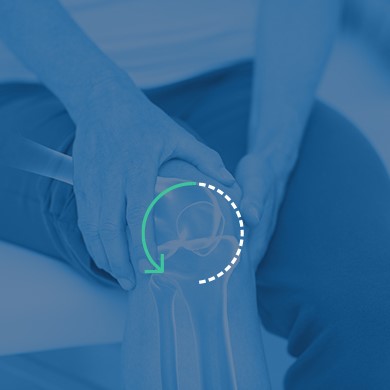Meniscal Injuries
The meniscus is a semicircular cartilage structure within the knee. There are 2 menisci (also known as sports cartilage) within the inside and outside of the knee. They protect the bony surfaces of the knee by providing shock absorption, acting like the suspension on a car.
Their role in the knee is to:
- Provide distribution of forces within the knee
- Act as shock absorbers
- Provide proprioception (sensory feedback to the brain)
- Provide added stability to the knee
Meniscal tears may occur following traumatic twisting injuries or from relatively minor trauma to the knee. Traumatic tears can often result in mechanical symptoms such as locking of the knee and instability.

Symptoms
Symptoms of a meniscal tear include:
- Knee Pain – this may be intermittent in nature, often described as a catching pain
- Locking (Joint jamming) of the knee
- Instability
- Joint swelling – This may occur at the time of the injury and then settle down
- The pain can be reproducible in nature particularly when squatting or twisting on the knee
Treatments
Non-operative
Not all meniscal tears require surgery. Smaller tears can heal without surgery especially in younger patients. In the presence of osteoarthritis, degenerative meniscal tears can occur. It is more beneficial to retain the meniscus and thereby prevent further arthritic deterioration within the knee. Use of anti-inflammatory medication, intraarticular steroid injections and physiotherapy can help improve symptoms.
Operative
If non-operative treatment fails or if the tear is large and is causing a mechanical obstruction to the knee, arthroscopic (keyhole) surgery is recommended. The type of surgery includes:
By applying stitches to bring the torn edges of the meniscus together the meniscal tear can heal. Factors that affect the ability of the meniscus to heal are:
- Timeframe of the tear – the sooner a tear is repaired the better
- Age of the patient – younger patients have better healing potential
- Position of the tear – healing requires a good blood supply, the further away from the joint attachments the tear is the worse the blood supply and therefore healing potential.
The surgery is a daycase procedure. After surgery a hinged knee brace will be supplied to allow a range of motion of 0-90 degrees. For 6 weeks after the surgery you will be mobilising non weight bearing with crutches.
It takes up to 12 weeks for the meniscus to repair, therefore the rehabilitation back to full sports is generally 4-5 months after surgery.
Not all meniscal tears are repairable, if this is the case a meniscal debridement (meniscectomy) is performed.
When the torn meniscus cannot be repaired it is removed by arthroscopic (keyhole) surgery. The free edges of the tear that become trapped within the joint are removed so that the meniscus becomes stable.
This surgery is a daycase procedure. After surgery you will be able to mobilise full weight bearing but may require crutches for support during the first week after surgery.

